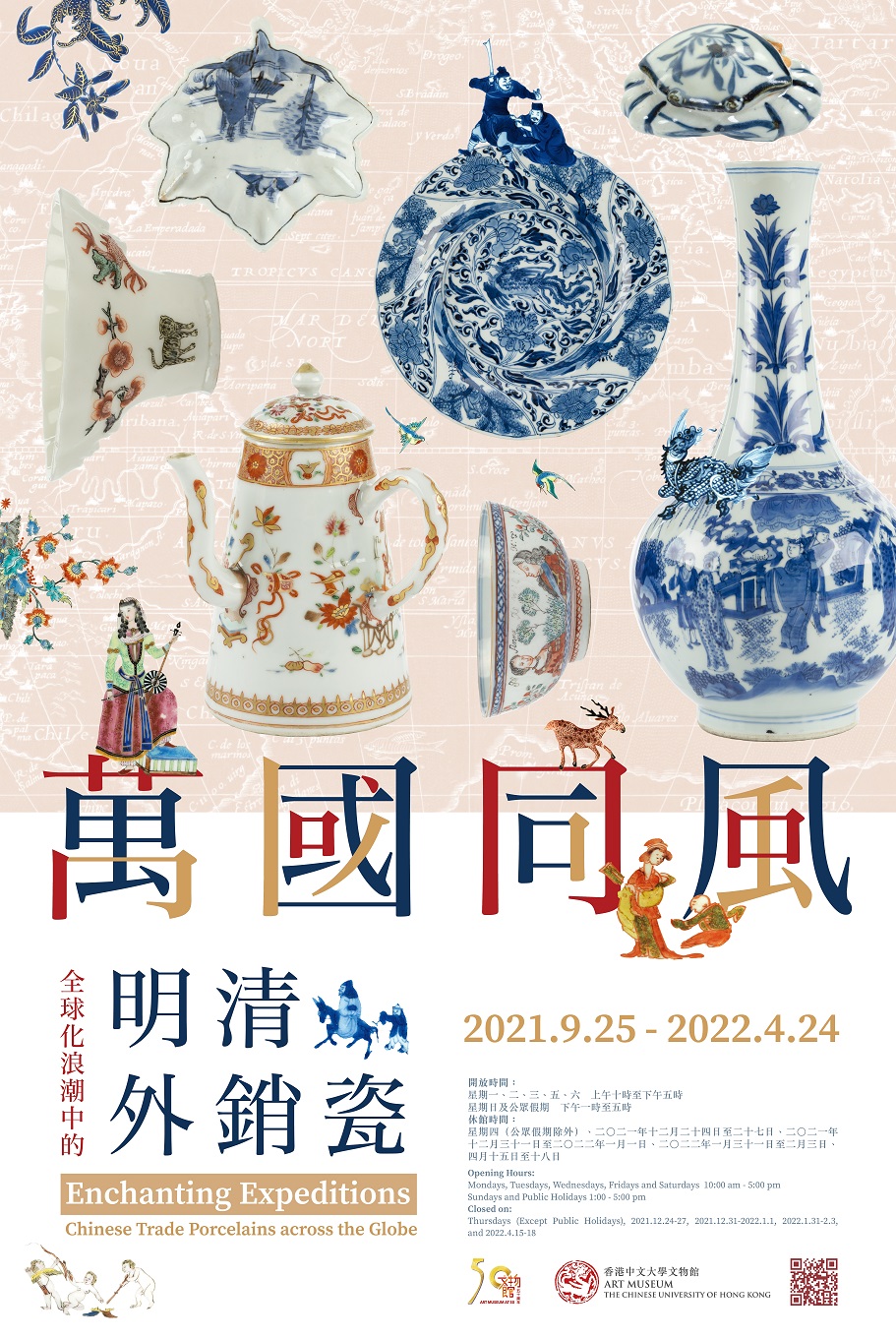Events
Enchanting Expeditions: Chinese Trade Porcelains across the Globe
25 Sep 2021 - 24 Apr 2022
Opening Hours:
Mondays, Tuesdays, Wednesdays, Fridays and Saturdays 10:00 am – 5:00 pm
Sundays and Public Holidays 1:00 pm – 5:00 pm
Closed:
Thursday (Except Public Holidays)
New Year, Lunar New Year, Easter and Christmas Holidays
Gallery III & IV, Art Museum, The Chinese University of Hong Kong
Open to the public. Free admission.
3943 7416
At the height of the Age of Discovery in the 16th century, Europeans flocked to the Orient, surmounting geographic barriers, and plunging the Ming empire into the globalization matrix. The great variety of produce and finely crafted objects from Ming China, for daily use or decoration, quickly became sought-after international commodities in a growing world market, and a driving force for Europeans to expand their trade in the Orient. Among the most highly prized Chinese goods were silk, porcelains, lacquerwares, and tea.
Very much a specialty of the Ming, porcelain took the Europeans by storm as soon as it arrived on the continent. Translucent and shiny, light and durable against wear and erosion, the exotic pieces with a mysterious oriental style were zealously coveted by royalty, aristocrats, and even religious leaders. To make the most of the drastically expanding global market, merchants from various countries became actively involved in the design, manufacture, shipment, and sale of Chinese porcelain, resulting in diversification of production centres as well as an amazing array of types and decorations for this vibrant Chinaware. The Chinese trade porcelain thus entered its golden age and caused marvellous ebb and flow in the globalised commercial world.
The present exhibition provides an overview of the Sino-European maritime trade in porcelain during the Ming and Qing dynasties. Integrating object display with textual records as well as images from history, it features over 400 pieces (sets) of trade porcelains and related objects from the Art Museum, the Chinese University of Hong Kong, and other public and private collections. We aim to reconstruct the design, manufacture, transport, and sale processes of Chinese export porcelain and their use and impact in overseas markets, and we invite visitors to travel with us back in time and across the globe to see how Ming and Qing porcelain came to dominate the international market and how it profoundly impacted the porcelain industry of the world. The exhibition is organised in six sections: Encountering Oriental Wonders, Thriving Country of China, Manufacture and Transport of Porcelain, Braving the Ocean Waves, International Fashions, and Profound Impact of Chinaware.


